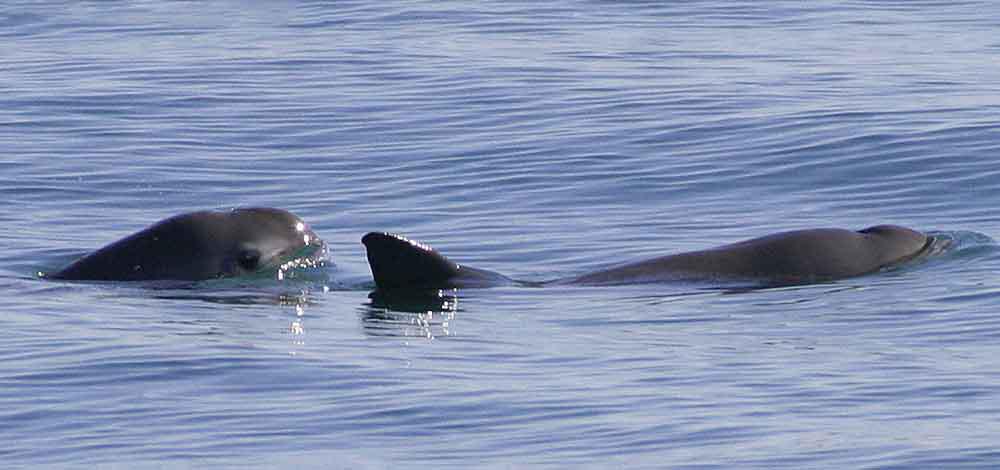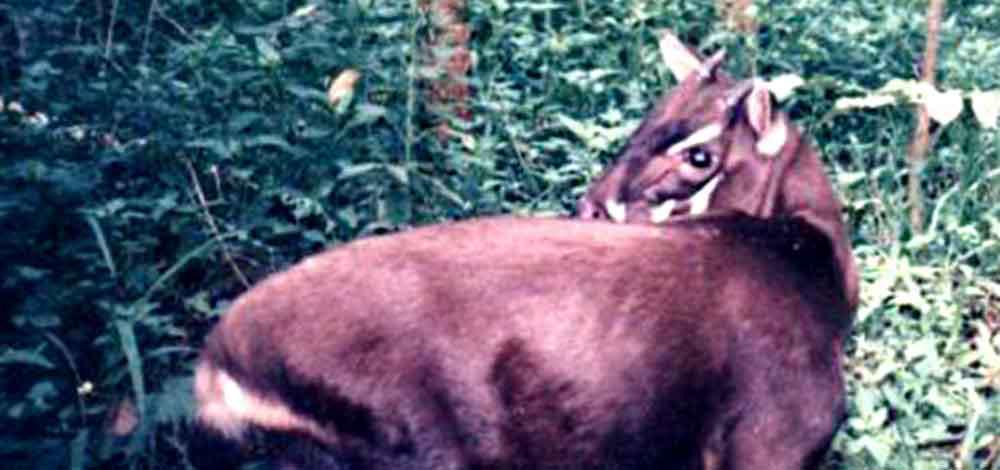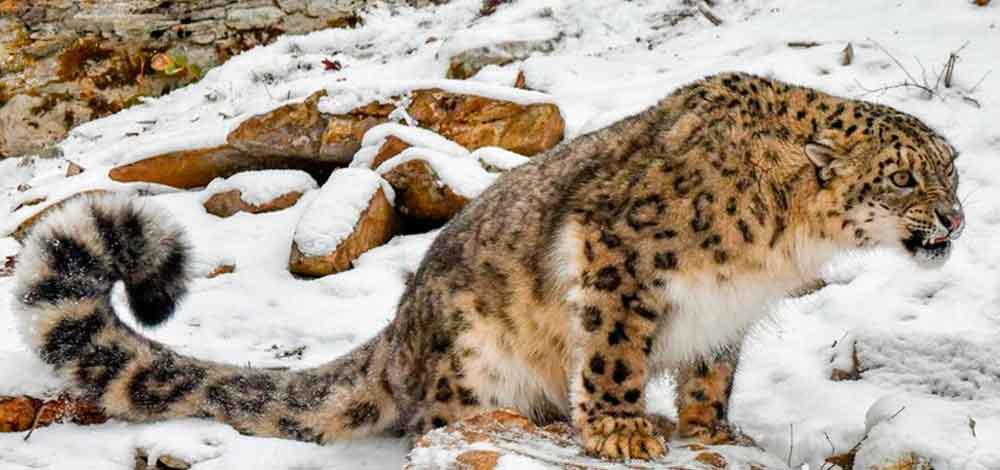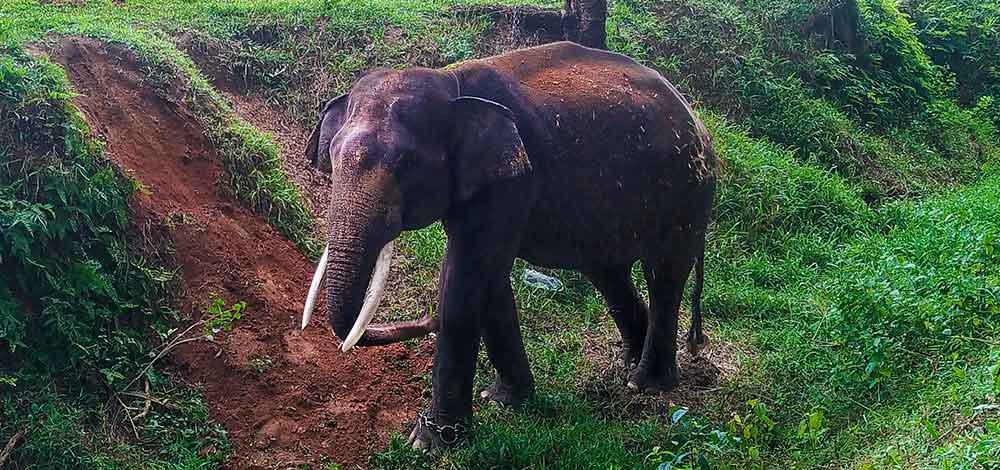Endangered animals are those species that are at risk of extinction due to various threats, such as habitat loss, poaching, and climate change. While the loss of any species can have cascading effects on the ecosystem, the loss of endangered animals can be particularly devastating.

Endangered animals can be found all over the world, in both terrestrial and aquatic habitats. In this article, we will explore the top 10 Most Endangered Animals.
This Top 10 list delves into the stories of the most endangered animals on Earth, highlighting the urgent need for conservation efforts to safeguard these irreplaceable treasures of nature before it’s too late.
Let us take a closer look at these extraordinary animals and the challenges they face, reminding us of our shared responsibility to protect our planet’s living heritage.
What are Endangered Animals?
Animals classified as endangered are those whose extinction is threatened by a number of factors. Threats to the environment include things like diseases, habitat loss, poaching, and climate change. When a species is listed as endangered, it signifies that it has a serious chance of going extinct soon and that immediate action is required to preserve and protect it.
The International Union for Conservation of Nature (IUCN) maintains a list of threatened species, known as the “Red List,” which classifies species as either “critically endangered,” “endangered,” “vulnerable,” “near threatened,” or “least concern.” The Red List is used to identify and prioritize conservation efforts and to provide information to governments, NGOs, and the general public about the status of species.
List of Top 10 Endangered Animals
| Javan Rhino |
72-75 |
| Vaquita |
10 – 13 |
| Mountain Gorilla |
1,063 |
| Saola |
100-250 |
| Amur Leopard |
100-120 |
| Bornean Orangutan |
104,700 |
| Sumatran Elephant |
2,400-2,800 |
| Sumatran Tiger |
400 – 600 |
| Siberian Tiger |
500 – 600 |
| Black Rhino |
6,487 |
Here is the list of the top 10 endangered animals in the world, according to the IUCN Red List:
1. Javan Rhino
- Remaining population: 72-75
- Peak population: 5,000-6,000
- Habitat: Ujung Kulon National Park, Java, Indonesia
- Threats: Poaching, habitat loss
- Conservation status: Critically Endangered
Only the Ujung Kulon National Park in Java, Indonesia, is home to the severely endangered Javan Rhinoceros. It is one of the rarest mammals in the world.
A single-horned rhinoceros known as the Javan Rhino, it has an unusual skin pattern of sagging folds and wrinkles. It prefers wallows and mudholes and is adapted to surviving in rainforests.
2. Vaquita

Vaquita
- Remaining population: 10
- Peak population: 500-1,000
- Habitat: Gulf of California, Mexico
- Threats: Bycatch in illegal fishing nets, habitat loss
- Conservation status: Critically Endangered
Just a small portion of the Gulf of California is home to the highly endangered Vaquita porpoise species. It is one of the most endangered species of cetacean and is also the tiniest and rarest.
The vaquita is a cautious and elusive creature that is hardly observed by people. Bycatch, or the unintentional capture of species that are not intended to be caught, is the primary threat to the vaquita. Many people have perished as a result of the Vaquita being frequently ensnared in fish-catching gillnets. Pollution and habitat loss are further dangers to the vaquita.
Less than 30 are thought to still exist in the Vaquita population, which has drastically decreased in recent years.
3. Mountain Gorilla

Mountain Gorilla
- Remaining population: 1,063
- Peak population: 6,000
- Habitat: Virunga Mountains of Rwanda, Uganda, and the Democratic Republic of the Congo
- Threats: Poaching, habitat loss, disease
- Conservation status: Endangered
In the mountains of central Africa, notably in the nations of Uganda, Rwanda, and the Democratic Republic of the Congo, lives a critically endangered species of a gorilla called the mountain gorilla.
There are thought to be around 1,000 left. Due to a number of challenges, such as habitat loss and degradation, poaching, and sickness, mountain gorillas are in risk. The primary threat to mountain gorillas is the destruction of their habitat, as the forests in which they dwell are being cleared for agriculture, logging, and the production of charcoal.
4. Saola

Saola
- Remaining population: 100-250
- Peak population: Unknown
- Habitat: Dense, evergreen forests in the Annamite Mountains along the border of Vietnam and Laos
- Threats: Habitat loss, poaching, snare hunting
- Conservation status: Critically Endangered
The Saola (Pseudoryx nghetinhensis) is a critically endangered species of antelope that is found only in the Annamite Mountains of Vietnam and Laos. It is also known as the “Asian Unicorn” due to its rarity and elusiveness.
The Saola was only discovered in 1992 and is one of the most recently discovered large mammals. Small and slim with long, straight horns, the Saola is an antelope. Its face, neck, and legs are whitely marked, and its coat is dark brown.
The Saola inhabits forested places and has evolved to survive in rough, rocky terrain. Due to logging, cultivation, and human development, the Saola’s habitat is being lost and degraded, posing a threat to the species.
5. Amur Leopard

Amur Leopard
- Remaining population: 100-120
- Peak population: 2000
- Habitat: Eastern Siberia, Russia
- Threats: Poaching, habitat loss, prey depletion
- Conservation status: Critically Endangered
In northeastern China and the Russian Far East, there is a critically endangered species of leopard called the Amur Leopard. It is also referred to as the Manchurian Leopard or the Far Eastern Leopard.
The Amur Leopard, which is distinguished by its thick, reddish-brown coat, has adapted to life in the area’s temperate woodlands. Concerns for the Amur Leopard include habitat loss, poaching, and conflicts with humans. As a result of these threats, the leopard faces a high risk of extinction.
One of the rarest big cats in the world, it is thought that there are fewer than 150 individuals left in the wild.
6. Bornean Orangutan

Borean Orangutan
- Remaining population: 104,700
- Peak b: 230,000
- Habitat: Lowland rainforests, tropical swamp forests, and mountain forests of Borneo
- Threats: Habitat loss, hunting, illegal pet trade
- Conservation status: Endangered
On the island of Borneo, which is shared by Indonesia and Malaysia, live an endangered species of orangutan known as the Bornean Orangutan. It is a big monkey with reddish-brown hair and an unusual face with prominent cheek pads.
Due to habitat loss brought on by the destruction of Borneo’s forests for logging, palm oil farming, and other uses, the Bornean orangutan is now considered to be endangered. Poaching is a hazard to the orangutan as well because it is occasionally killed for its flesh or caught and sold as a pet.
There are an estimated 45,000 Bornean Orangutans remaining in the wild.
7. Sumatran Elephant

Sumatran Elephant
- Remaining population: 2,400-2,800
- Peak population: 5,000-6,000
- Habitat: Broadleaf moist tropical forests, secondary forests, and riparian areas of Sumatra, Indonesia
- Threats: Habitat loss, logging, infrastructure development, poaching and human-elephant conflict.
- Conservation status: Critically Endangered
On the Indonesian island of Sumatra, there is an endangered species of elephant known as the Sumatran Elephant. The modest size, rounded ears, and relatively long tail make it the smallest species of the Asian elephant.
Due to the conversion of forests into agricultural land and palm oil plantations, the Sumatran Elephant’s habitat is at risk. Poaching for its ivory, which has a high black market value, is another threat to it.
Less than 1,500 elephants are thought to be in the population of the Sumatran Elephant.
8. Sumatran Tiger

Sumatran Tiger
- Remaining population: 400-600
- Peak population: Estimated 1,000
- Habitat: Tropical broadleaf evergreen forests, freshwater swamp forests, and peat swamps of Sumatra, Indonesia
- Threats: Habitat loss, poaching, human-tiger conflict
- Conservation status: Critically Endangered
Located exclusively on the Indonesian island of Sumatra, the Sumatran tiger is a subspecies of the tiger. It is one of the smaller tiger subspecies and is extremely vulnerable.
Due to habitat degradation, poaching, and human-tiger conflict, More than 500 Sumatran tigers are thought to be the last wild animals as of 2023. As a result of increased logging, agriculture, and other human activities, the habitat of Sumatran tigers is being destroyed, which is their major threat.
The tigers are squeezed into ever-tinier spaces as the trees are destroyed, which makes it harder for them to locate food and partners.
9. Siberian Tiger
.jpg)
Siberian Tiger
- Remaining population: 500-600
- Peak population: Estimated 1,000
- Habitat: Temperate forests, taiga, and mixed forests of the Russian Far East
- Threats: Habitat loss, poaching, prey depletion
- Conservation status: Endangered
Northeastern China and the Russian Far East are home to the critically endangered Siberian Tiger, also referred to as the Amur Tiger. It is the biggest subspecies of tiger, distinguished by its striking white belly and dense hair.
Due to a number of issues, including habitat degradation, poaching, and conflict with people, the Siberian Tiger is now considered to be endangered. The tiger is in danger of being killed by poachers who want to sell its skin, bones, and other body parts since its habitat have been severely harvested for agriculture.
In addition, the tiger occasionally preys on cattle, which can provoke human conflict.
10. Black Rhino

Black Rhino
- Remaining Population: 6,487
- Peak Population: Estimated 800,000
- Habitat: Savannas, woodlands, and grasslands of Africa
- Threats: Poaching, habitat loss, competition with livestock for food and water
- Conservation Status: Critically Endangered
The eastern and central parts of Africa are home to a species of rhinoceros known as the black rhino or Diceros bicornis. These animals are distinguished by their two horns, which are utilized for both protection and foraging, and by their striking black or dark grey skin.
Regrettably, the International Union for Conservation of Nature (IUCN) has listed the black rhino as severely endangered. This indicates that there is a very high likelihood that the species will go extinct soon. The Black Rhino is in danger for a number of reasons, including habitat degradation, poaching, and human conflict.
Major Causes of Endangerment
There are several causes of endangerment that contribute to the decline of species around the world. Some of the main causes of endangerment include:
1. Habitat Decline
- The destruction of animals’ natural habitats is one of the largest challenges to them. Deforestation increased agricultural production, urbanization, and mining are a few causes of this.
- The resources that animals need to survive, such as food, shelter, and breeding grounds, can be lost when natural habitats are destroyed or altered.
2. Changing Climate
Numerous species are finding it difficult to adjust to the changing climate. As a result, suitable habitats may disappear, food and water supplies may alter, and predator exposure may rise.
3. Poaching and Over-hunting
Over-hunting and poaching have led to the extinction of several species. When an animal is hunted for its flesh, skin, or other body parts—which are frequently in high demand on the black market—this is possible.
4. Human Conflict
The conflict between humans and other people can also put certain animals in danger. Conflicts over natural resources like land or water as well as those that develop when certain species are seen as a danger to people or their property might fall under this category.
5. Pollution
Many species, including those that dwell in the air, water, and land, can be harmed or even eliminated by pollution. Indirect effects of pollution on species are also possible, such as habitat degradation.
6. Exotic Species
When introduced into an ecosystem, non-native species can frequently out-compete native species for resources and habitat. Due to their inability to compete with the invading species, this may cause native species to decline.
Efforts to Conserve and Protect Endangered Species
There are many efforts underway to conserve and protect endangered species around the world. Some of the main efforts to protect endangered species include:
1. Establishing protected areas
National parks and wildlife reserves are examples of protected places that are set aside, particularly for the conservation of animals and their habitats. Without the risk of exploitation or development by humans, these places offer a secure environment for species to thrive and reproduce.
2. Captive breeding and reintroduction programs
Through captive breeding and reintroduction projects, certain governments and conservation organisations are striving to rescue endangered species. These initiatives entail raising species in captivity, recovering their numbers, and then releasing them back into the wild.
3. Habitat restoration
Restoring an area to its natural form through habitat restoration can aid in the recovery of endangered species. This can entail a range of actions, including the elimination of invasive species, the planting of native plants, and the restoration of natural environments.
4. Education and awareness campaigns
A good method to support conservation efforts is to raise public awareness of the value of protecting endangered species. This could entail informing people about the value of safeguarding species and letting them know what they can do to help protect endangered species in their local neighborhoods.
5. Implementing conservation laws and regulations
Governments all across the world have put laws and rules into place with the intention of protecting endangered species. These regulations may forbid hunting, poaching, or the sale of endangered animals. They may also impose penalties on violators.
Also read:
Conclusion
The biodiversity of our planet must be maintained in order for future generations to continue to appreciate the beauty and complexity of nature. This can only be done by protecting endangered species.
Due to human activities like habitat loss, poaching, and climate change, many species are in danger of going extinct. If conservation efforts aren’t made, these species will continue to deteriorate.
Conservation efforts are being made to create protected areas, put conservation laws and regulations into effect, run captive breeding and reintroduction programs, restore habitats, and raise public awareness in order to safeguard endangered animals. Although these initiatives are crucial, they cannot save endangered species on their own. It is also important for individuals to take responsibility for protecting endangered animals by being aware of the issue, making conscious choices in consumption and supporting conservation efforts financially or through volunteering.
Being involved in local conservation groups or contacting your local representatives and urging them to support conservation policies are a few ways of getting involved. Every small action can help make a difference in the protection of endangered species. We all have a responsibility to act and protect these magnificent creatures before they disappear forever.
Top 10 Most Endangered Animals – FAQs
Q1. Why are these animals endangered?
There are a variety of reasons why these animals are endangered. Some of the most common factors include habitat loss, poaching, and climate change. For example, the Giant Panda’s natural habitat is being destroyed due to human development, and many rhinos are poached for their horns.
Q2. What can be done to help protect these endangered animals?
There are many actions that can be taken to help protect endangered animals. Some of the most effective measures include:
- Protecting and preserving the animals’ natural habitats
- Enforcing laws against poaching and illegal wildlife trade
- Educating the public about the importance of conservation
- Supporting conservation organizations and programs
- Conducting research to understand and address the specific threats facing endangered species
Q3. What species only has 1 left?
There is only one specimen left of the species Madhuca diplostemon.
Q4. What are most endangered animals in India?
Some of the most endangered animals in India are:
- Bengal Tiger.
- Asiatic Lion.
- Snow Leopard.
- One-horned Rhinoceros.
- Blackbuck.
- Lion-tailed Macaque.
Like Article
Suggest improvement
Share your thoughts in the comments
Please Login to comment...